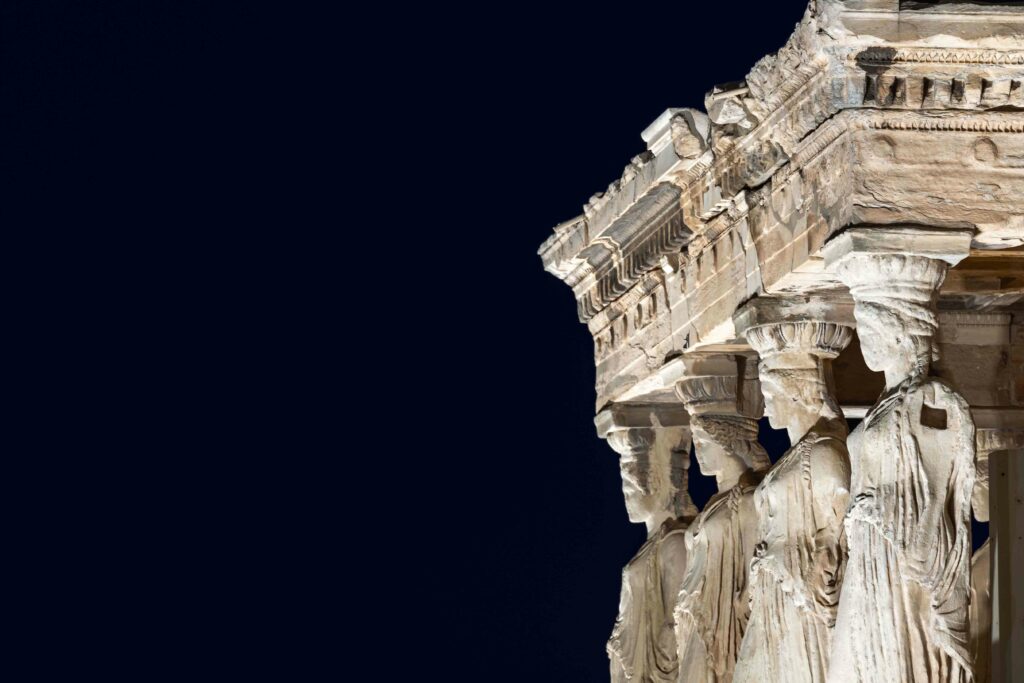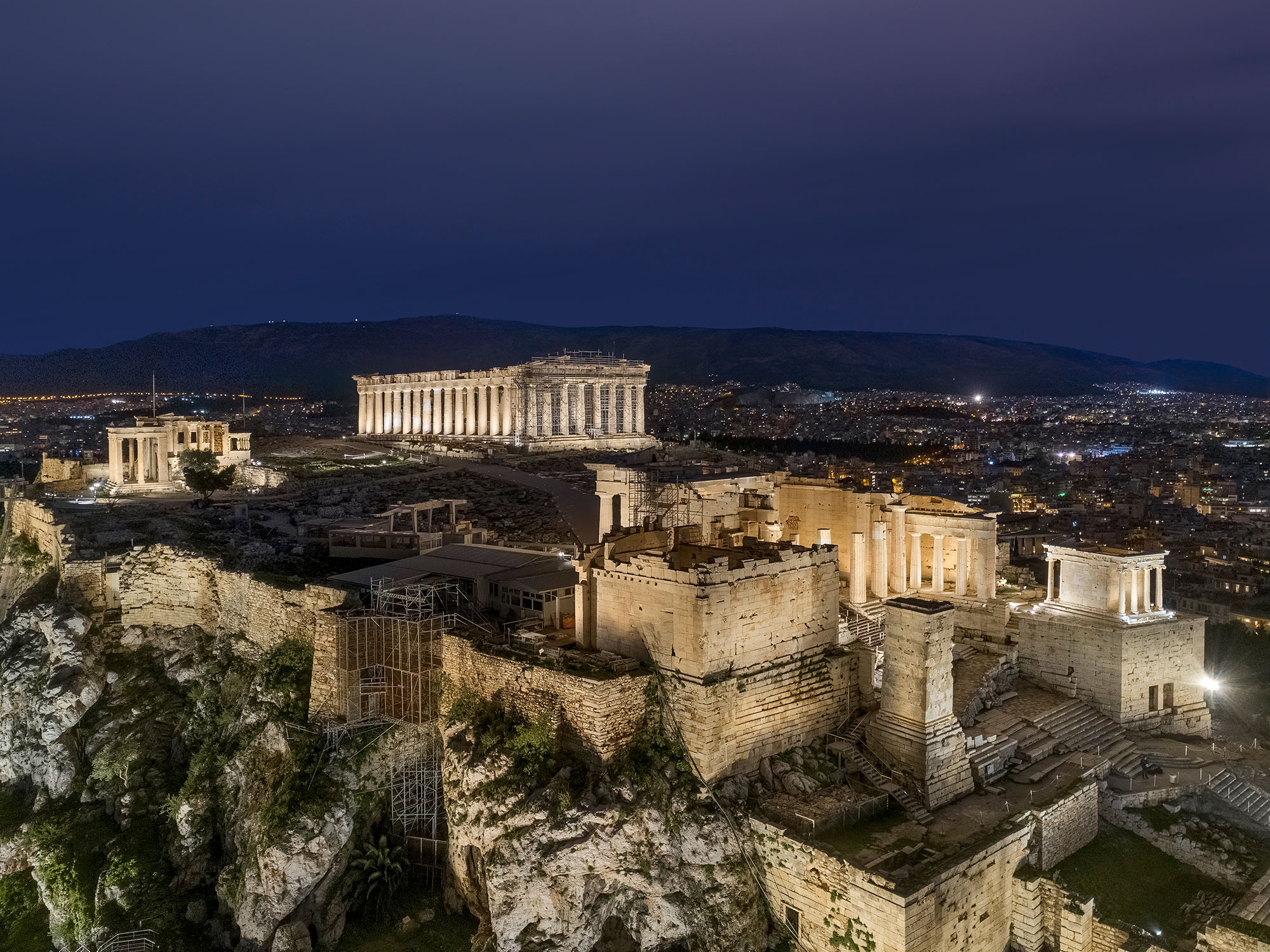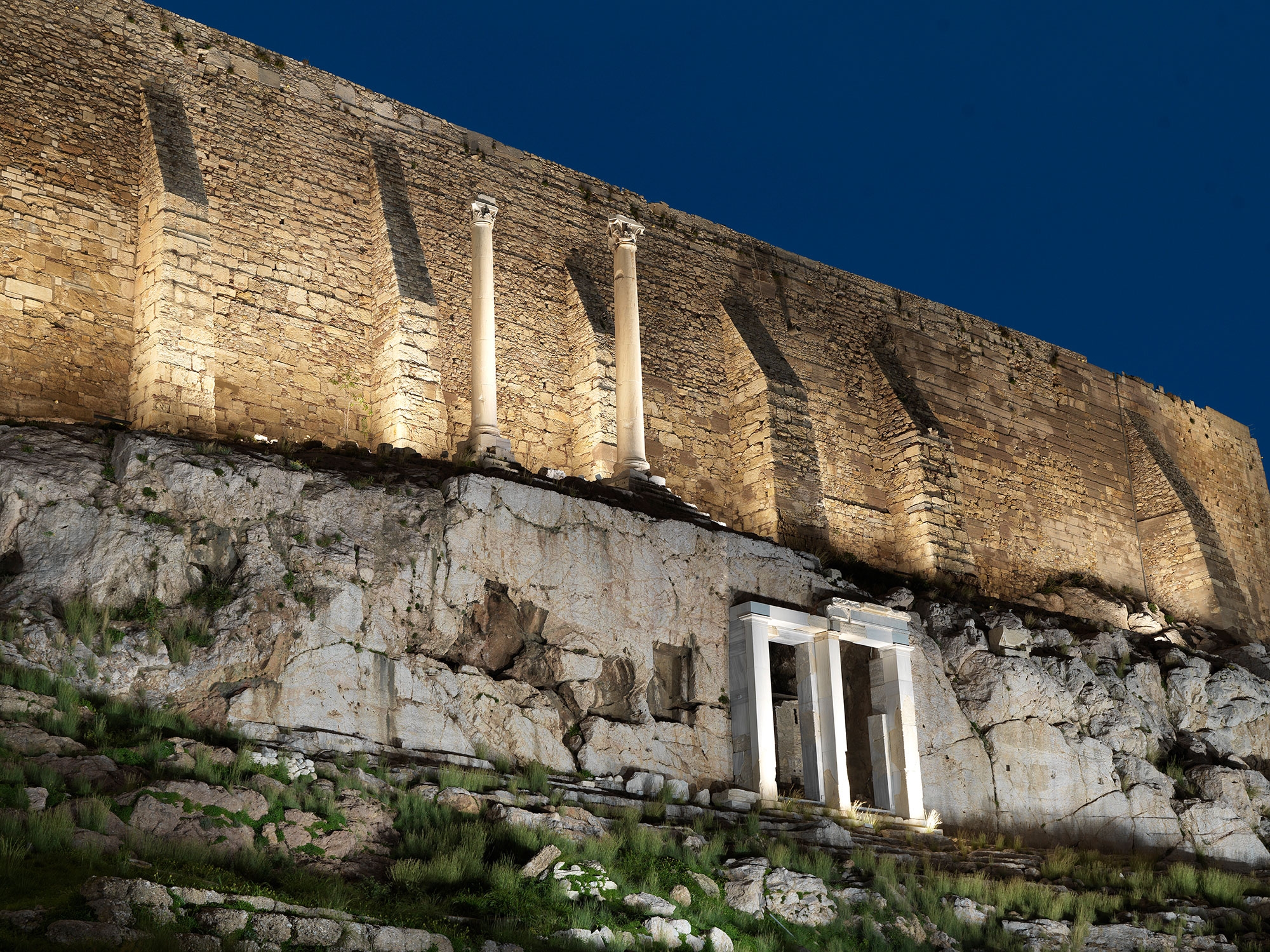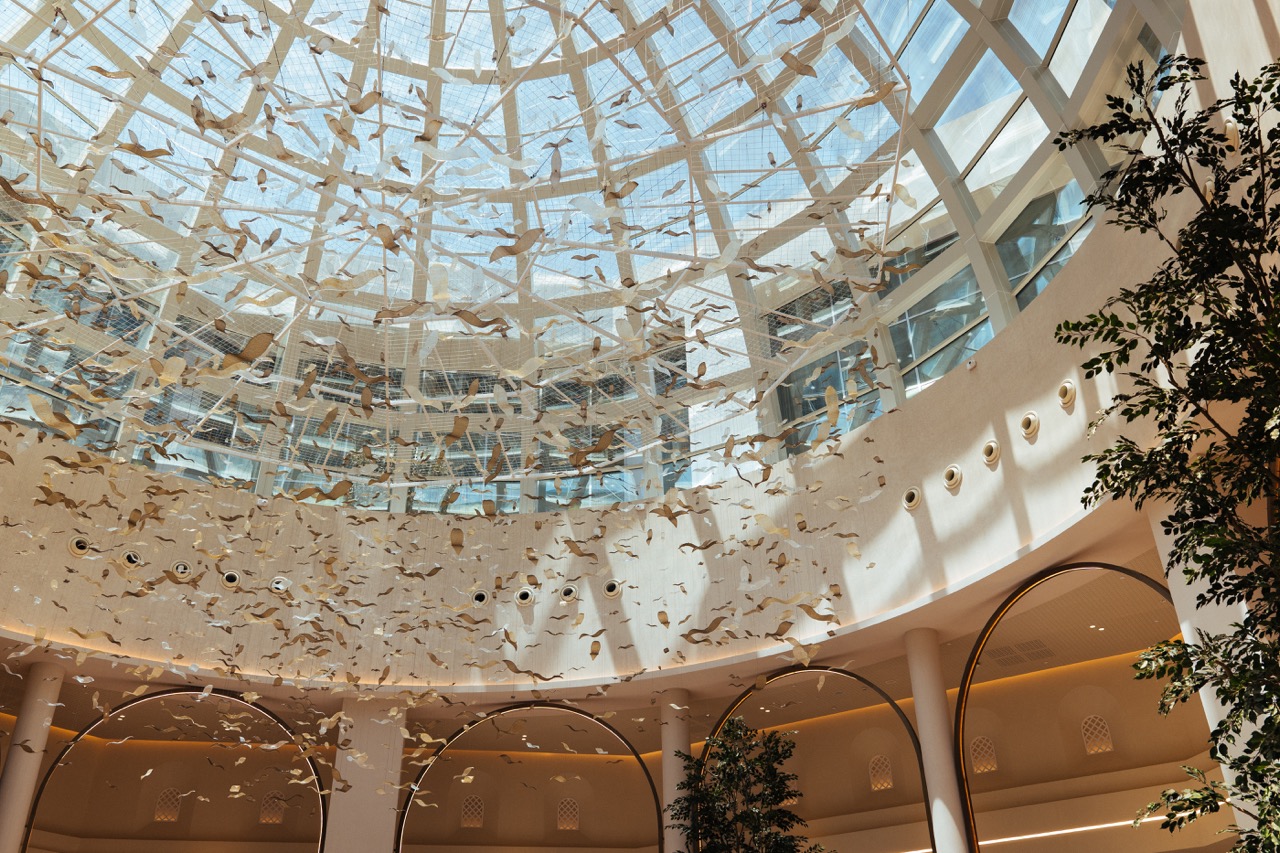Founder of the award-winning lighting studio Eleftheria Deko & Associates, Eleftheria Deko and her team started to work on the Acropolis of Athens and other Athenian monuments in January 2020. They have been working day and night on this project, having only 45 days to deliver the lighting study and complete the whole project in nine months from the assignment. The “Acropolis of Athens” project has received the LIT Lighting Design of the Year award for 2021. Eleftheria shares with us her design vision for this unique realization, as well as for her upcoming projects!
Could you tell us a little about yourself? How did you discover your passion for lighting design?
I have been working as a lighting designer since 1990. That is 31 years!
I have designed lighting for more than 600 theatre, music, dance, and opera performances, for public events, multimedia shows, exhibitions, as well as art installations, in Greece and abroad, and have received good reviews, awards, and honours, including the 2009 Woman Artist of the Year for my contribution to the arts as a lighting designer in Greece. I have been teaching stage lighting design at the Theater Department of the School of Fine Arts of the Aristotle University of Thessaloniki from 2005 to 2019, and I have to say that teaching has been a most fulfilling experience! Teaching and sharing my passion for lighting with young people and seeing them over the years become great lighting designers themselves is the most rewarding thing of all.
A significant moment was also my collaboration in the opening and closing ceremonies of the Athens 2004 Olympic Games, as lighting designer and director, and member of the creative team. These two and a half years have been very creative and full of passion. The Emmy Award for Outstanding Lighting Direction, at the 57th Emmy Awards ceremony (September 2005), was the first international recognition, and as the first Greek to have achieved this recognition, I have to say that I felt very very proud.

Photo credit: Gavriil Papadiotis, Stelios Tzetzias
In 1999, I started my practice in the field of architectural lighting, founding the firm Eleftheria Deko & Associates Lighting Design. Together with my colleagues, we have created more than 200 studies for interior, exterior, and facade lighting for a large variety of public and private venues, such as office buildings, shopping malls, residences, restaurants, cafes, art spaces, monuments, hotels, media facades, and public spaces.
In December 2018, Eleftheria Deko & Associates Lighting Design won the first prize for exterior lighting at the Darc Awards, and we were the first Greek lighting design studio that achieved such an international award. Then more projects and awards followed, assuring us that we do serve lighting design in a good way.
The Acropolis lighting project came in 2020, and it has been more than a project for me. It has been a mission! As a Greek lighting designer, the lighting of the Acropolis was a lifetime project. It has been a unique experience for me and my team. It has been a very interesting journey.
Going back to how I discovered my passion for lighting design, I should say, inadvertently! By chance, or by this magic way that life leads you to your destiny. I was pursuing a master’s degree in performance choreography at NYU, and the very first class I chose was lighting design to learn how to light my own choreographic pieces. I immediately fell in love with lighting, and I have never stopped loving it since. Of course, New York in those days was full of art, theatre, and dance performances, all with new ideas and pioneers in lighting. I was very lucky.

Photo credit: Gavriil Papadiotis, Stelios Tzetzias
How would you describe the role and responsibilities when working on the new lighting of the Acropolis of Athens projects? Which other moments are included in this project? What were the design brief and your process when taking on this project?
This project was so much different from any other one. I felt I had to forget all I knew and start from scratch. Before starting our lighting study, I became an observer of the Acropolis. I spent many hours observing the monuments during the different phases of the day. That observation was the guide and the teacher. From different neighbourhoods, near and far, I observed the Acropolis as part of the city and its coexistence in today’s urban landscape. From these observations, I realized that the three elements of rock, fortification walls, and monuments, needed to be differentiated. Each bears different symbolism as well as different materiality.
The fortification, the rock, stands proudly in front of mankind. The walls represent human effort and craftsmanship, and the monuments are worship, art, and if I may say so, mystery. These three elements cannot be illuminated in the same way. And this was our concept/philosophy for the new lighting of the Acropolis. Thus, through colour temperature, direction, and intensity differentiation, we managed to achieve this. Moreover, we wanted to highlight the details of the sculpting parts and create a depth of field to make the different volumes distinct from far away. For that reason, we used 12 different shades of white, to give different hues of light to the different monuments on the rock: the Parthenon, the Erechtheion, the Temple of Athena Nike, and the Propylaia.
My role and responsibility were to tame the desire to do more than needed. To achieve this, the new lighting would reflect the monument’s own light, highlight the light inherent in them, together with their history and the civilization they represent, and not project on them something that was not appropriate. It is such a delicate thin line to avoid the desire to “show off” and surrender to the needs of the monument and not to the ego of the designer. When we undertake large projects, I believe it is easy to fall into the trap of exaggeration. Sometimes the project itself might allow it, but in monuments such as the Acropolis, this is, in my opinion, forbidden. As in the ancient Greek saying, “all in good measure”!
In addition to the study of the new lighting of the Acropolis, we also undertook the complete implementation and execution of the project, including new wiring, electrical panels, and a control system. For this, we collaborated with a sub-contractor, Mr Dimitris Kapetanelis, and his team.
Another task was to obey all the restrictions and follow the guidelines of the archaeologists. Due to the archaeological significance of this historical monument, the placement and installation of the new lighting fixtures had to go through specific processes and get permission and installation approval from the Central Archaeological and Museum Council.

Photo credit: Gavriil Papadiotis, Stelios Tzetzias
As per the brief, we didn’t receive a brief for the lighting design, but we received a technical study with guidelines and restrictions from the archaeological department of the Ministry of Culture, which we had to respect. They had only requested the improvement of the existing lighting and the replacement of the old luminaires, but we went beyond that and proposed a new philosophy. Thanks to the sponsor, the Onassis Foundation, all this became a reality.
We undertook the project in January 2020 and completed the first phase on September 30th and the second phase (the temple of Hephaestus and the Philopappo’s monument) on December 3rd.
One of the main challenges that we faced in completing the project was the tight schedule. We had to deliver the lighting study within 45 days and complete and deliver the whole project within nine months from the assignment day. This restriction forced us to have a very strict schedule. And I have to say, we managed it very well. We divided our team into smaller groups, and each one had a different task. Working day and night in shifts to meet the deadline was not easy, especially for me since I was there day and night. Everybody involved, I have to say, worked with so much dedication and passion, and despite the very long hours, no one ever complained.
Our strict but effective schedule helped us a lot with the additional problem that appeared in the meantime, which was the COVID pandemic. We didn’t know how to handle this new situation, as we didn’t have the demo luminaires on time to do our on-site tests. We tested on-site similar spotlights and the real ones on Dialux and Relux.
This project was a journey with many difficulties, but also many rewards. The feeling after completing the task is not easy to describe in words. The Parthenon has been called by historians, artists, and architects throughout the centuries, the perfect building. Taking on the task of lighting it can only leave you in awe!
What does it mean to you to win the LIT 2021 Lighting Designer of the Year title?
The LIT award, and especially the title of Designer of the Year, gives me more than pride and satisfaction for the international recognition of my work. It is a great honour!
Being recognized by a jury panel of 38 of the most talented and successful professionals is the greatest honour for me and my team! I thank all the jury members for this recognition and the LIT organizers for the prestigious lighting awards that help our field grow and evolve into a brilliant community!!
What do you feel is the most challenging part of working in lighting design today? Are there any new trends you would like to share?
I believe now is the most interesting time to be a lighting designer. An artist lighting designer! Because now we have so many tools to work with, so many… ways of lighting to promote beauty, to create magic! Lighting is at the peak of its evolution, and I am expecting many more technological advances to come. I imagine total cableless lighting, even smarter control systems, sound and light collaboration, interactive lighting projections, and even healing through lighting.

Photo credit: Gavriil Papadiotis, Stelios Tzetzias
What are you working on at the moment, and do you have any upcoming projects or collaborations that you’re able to tell us about?
In fact, we are very busy and happy to work on some very exciting projects. We just finished the lighting study of the Temple of Afaia on the island of Aegina, another amazing monument from the glorious times of Greek antiquity, predating the Parthenon. We have just completed the lighting of the new Archaeological Museum of Cyprus in Nicosia and the Archaeological Museum of the island of Kythnos in the Cyclades, Greece.
Other ongoing projects are the facade lighting of the Appotronics headquarters building in Shenzhen, China, the lighting of the renovation of the Athens Hilton, the Amathus Hotel in Limassol, Cyprus, and the lighting of two new hotels, one in Thessaloniki and one in Corfu, Greece. Also, the lighting of the facade of the Intercontinental Hotel in Doha, Qatar.
A new project that is starting with the new year is the Riviera Galleria by architect Kengo Kuma, part of the Hellinikon project.
What would be your best advice to emerging lighting designers?
Not to only work with light, but also to be in the light. Do not give up on the details. Keep on learning about light, not only the technical part, but from nature, literature, art, philosophy, and even astronomy… broader minds and broader ideas: better designs.
Last, what should we wish you for 2022?
Exactly what I wish for you and all people: to keep our inner flame lit, so that in the darkest moments it illuminates our path, gives us hope and strength, and warms up our hearts to be able to feel joy and share love.









